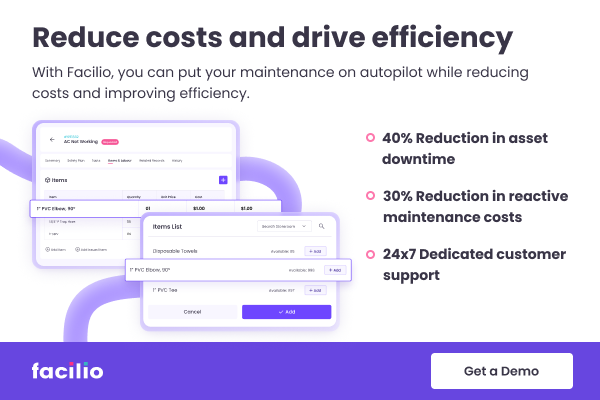Featured Maintenance Management
Balancing Reliability and Availability: Striving for the Best of Both Worlds
Availability measures the readiness of a piece of equipment to be used when necessary, while reliability measures its ability to function without failure. These metrics provide insights into a plant's overall performance, with availability focusing on the potential for use and reliability focusing on consistent functioning.
Why are reliability and availability important?
Both reliability and availability play a crucial role in maintaining the efficiency and effectiveness of a system or equipment. Reliable and available equipment leads to higher-quality products and more efficient production processes. Unreliable and unavailable equipment can lead to unexpected downtime, disrupting production schedules and decreasing revenue.
Improving the reliability and availability of equipment helps meet health and safety standards and reduce the environmental impact of a business. These equipment are less likely to fail, so there are fewer opportunities for hazardous incidents.
By replacing or refurbishing unreliable equipment or parts with reliable ones, businesses can improve their safety records while enhancing efficiency.
These parameters are essential to the Reliability, Availability, and Maintainability (RAM) analysis. RAM analysis helps industries improve their asset's productivity over its life cycle by minimizing waste, increasing profit, and, ultimately, optimizing its overall life cycle costs.

What is availability?
Availability measures how well a machine or system functions at any given moment. This metric is calculated as follows:
Availability minimizes downtime and improves on-time performance for repairable and continuously operating equipment.
For example, if a company has a machine that operates 8 hours a day and is down for maintenance 2 hours a day, the equipment availability would be 80%. This is important for businesses to track as it impacts production and can affect the bottom line.
How to calculate availability?
There are two main types of availability: inherent and achieved.
Inherent availability is used by machine designers and original equipment manufacturers (OEMs) to report the performance of their designs.
Achieved availability includes corrective downtime and downtime for preventive maintenance and other delays due to logistics and administration.
Use the following formula to calculate the inherent availability of a machine:
MTBF is the mean time between failure, and MTTR is the mean time to repair. It is the average time that a system is expected to operate without fail.
MTTR is the average time required to repair a system after a failure occurs. MTTR measures downtime caused by corrective actions, not preventive maintenance, logistics, or administrative issues. It helps identify potential downtime during equipment design stage so that teams can improve it through design features such as increased fault tolerance, improved ergonomics, or simpler maintenance procedures.
Achieved availability is calculated similarly but includes preventive maintenance downtimes and other delays. To calculate achieved availability of a system, you can use the following formula:
Uptime is the amount of time the system can function, and downtime is the amount of time that the system cannot operate due to failures or maintenance. Maintenance teams find this version of equipment availability more valuable, as they can optimize preventive maintenance schedules and care actions.

Steps to improve availability
There are several steps organizations can take to improve the availability of their systems and equipment:
- Determine current availability. You can measure the operating hours during your scheduled time in percentage form. This helps determine if the equipment meets your business needs and identifies ways to increase efficiency and reduce costs. If it is low, consider improving it and enhancing your company's operations.
- Calculate achievable availability. This is done by considering ideal conditions like personnel, spare parts, and maintenance practices. Analyze your facility's systems and identify any issues that can decrease availability. Use achievable availability as a benchmark to identify and fix inefficiencies and allocate the budget accordingly. Remember that achieving a high level of availability, like 99%, may not always be possible due to business limitations.
- Review and update operational practices. Consider how they contribute to failures, defects, and costs. These changes can be made without needing to invest in new tools or equipment, making it an affordable way to improve availability.
- Implement effective preventive maintenance (PM) practices to reduce equipment downtime and save valuable time and resources. Reactive maintenance and excessive PMs can lead to unnecessary downtime, but implementing a well-planned PM program can prevent equipment failures. To optimize PM plans, focus on the most impactful downtime events, perfect the timing of recurring PMs, streamline scheduling, and improve MRO inventory management.
- Enhance scheduling practices. Optimize your equipment maintenance and operation schedule by considering equipment locations, machines, and storerooms. Ensure you have the necessary equipment and parts available on time, communicate with your operations crews to have assets offline and account for skill limitations for each task.
- Use predictive maintenance (PdM) techniques. Implementing PdM techniques optimizes PM by using sensors to monitor equipment continuously and predict when PM is needed based on the specific needs of the equipment. This reduces costs by 25-30% compared to corrective maintenance.
- Use a computerized maintenance management system (CMMS). A CMMS helps organizations schedule and track maintenance activities, manage inventory, and track and analyze the performance of their systems.
What is reliability?
Reliability refers to the ability of a system to perform its intended function without failing. It measures how consistently a system operates without experiencing failures or breakdowns.
How to calculate reliability
To measure equipment reliability, you can use either MTBF or the failure rate. MTBF calculates the average time an asset operates without experiencing any failures.
To calculate MTBF, you can use the following formula:
Failure rate is the inverse of MTBF. You can use the following formula to calculate it:
Steps to improve reliability
There are several steps that organizations can take to improve the reliability of their systems and equipment:
- Gather data on equipment health and failure modes. This includes existing data in your database and new information you will need to collect. Focus on your most critical assets and consider using a CMMS to track work order data and monitor asset health.
- Conduct a failure mode and effects analysis (FMEA) on critical assets. FMEA involves analyzing potential failure modes and determining their impact on costs, production, safety, and the environment. This helps prioritize PM tasks.
- Prioritize preventive maintenance tasks. Based on your FMEA results, prioritize tasks that prevent the most severe failure modes. This requires root cause analysis to ensure the tasks you plan l address the equipment failures you want to avoid.
- Optimize MRO inventory management. Ensure you have the right quantities of necessary spare parts and tools on hand by analyzing your work order history and determining usage patterns. Involve your maintenance and operations teams in this process to avoid making decisions based solely on cost.
- Train your team in best practices. Human error is a common cause of equipment failures, so it's vital to ensure your operators and maintenance technicians are well-trained in best practices. Implement operating procedures and consider using checklists to help your team avoid costly mistakes.
- Focus on continuous improvement. This means regularly reviewing your equipment and processes, looking for ways to streamline maintenance and production, improve quality, and eliminate defects. As you develop a more effective preventive maintenance plan, consider incorporating new technologies to take your maintenance plan to the next level. Keep careful records to provide a baseline for continuous improvement.
How is reliability related to availability?
Both reliability and availability are essential considerations when designing and maintaining systems and devices.
A system with high reliability is less likely to experience failures or breakdowns, which leads to increased efficiency and reduced downtime. Similarly, a system with high availability will be easily accessible and ready to use when needed, improving efficiency and productivity.
The relationship between reliability and availability is as follows:
This equation shows that an equipment's reliability and the effectiveness of its maintenance determine its availability.
A system with high reliability can function without failing, but with improper care, its availability reduces. On the other hand, a machine with low reliability can fail frequently, but its availability can improve with proper maintenance and quick repairs.
Can reliability be higher than availability?
Reliability and availability can be higher or lower than each other, depending on a specific system or equipment. In some cases, a system can prioritize reliability and sacrifice some availability to ensure it functions best when operational.
In other cases, systems can prioritize availability and sacrifice some reliability to maximize the time it can perform its intended function.
Ultimately, the balance between reliability and availability depends on the specific needs and goals of the system or product.
For example, a system with high-reliability experiences extended downtime due to maintenance or repairs, resulting in lower availability.
On the other hand, a system with low-reliability experiences frequent failures, but its availability is relatively high if it's quickly repaired each time it fails.
How does CMMS help optimize reliability and availability?
CMMS software helps optimize reliability and availability by providing a centralized platform for tracking and managing maintenance activities, including preventive maintenance, repairs, and inspections.
It also provides real-time data on equipment performance and condition, helping identify potential issues before they become major problems.
Here are some ways a CMMS can help optimize reliability and availability:
- Preventive maintenance schedules: A CMMS allows you to schedule regular maintenance tasks and inspections to catch issues before they become problems. This proactive approach helps prevent unexpected breakdowns and keeps equipment running smoothly.
- Inventory management: A CMMS helps organizations manage their spare parts and consumables inventory, ensuring they have the right parts on hand when needed. This helps reduce downtime and improve the availability of systems by minimizing the time it takes to repair failures.
- Work order management: Simplify creating and tracking work orders and ensure that tasks are assigned to the right technicians and completed on time. This reduces downtime and improves overall efficiency.
- Asset tracking: With a CMMS, you can easily track the location, condition, and maintenance history of all your assets. This helps you make informed decisions about when to repair or replace equipment, improving reliability and reducing costs.
- Reporting and analytics: A CMMS provides a range of reporting and analytics capabilities, allowing organizations to track and analyze their maintenance activities and the performance of systems over time.

Get started now.
Get in touch with us today and learn how a CMMS solution can help.



